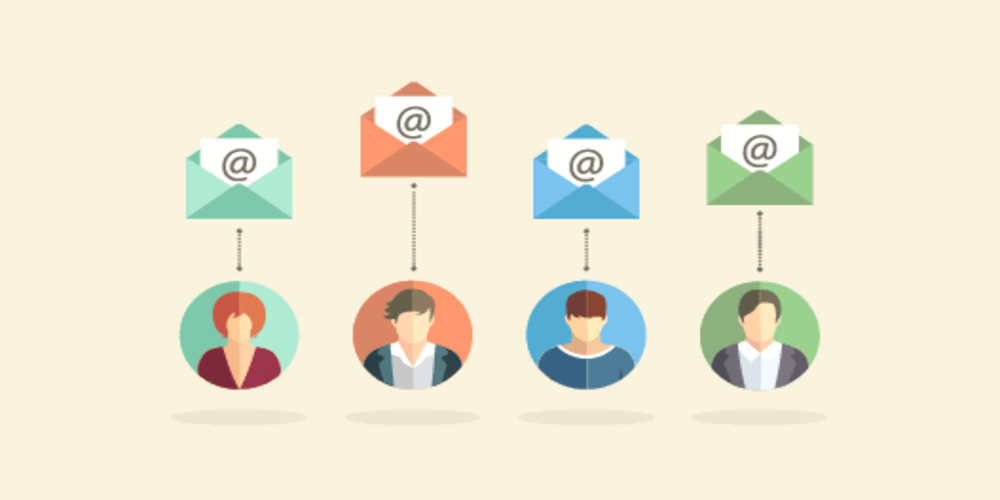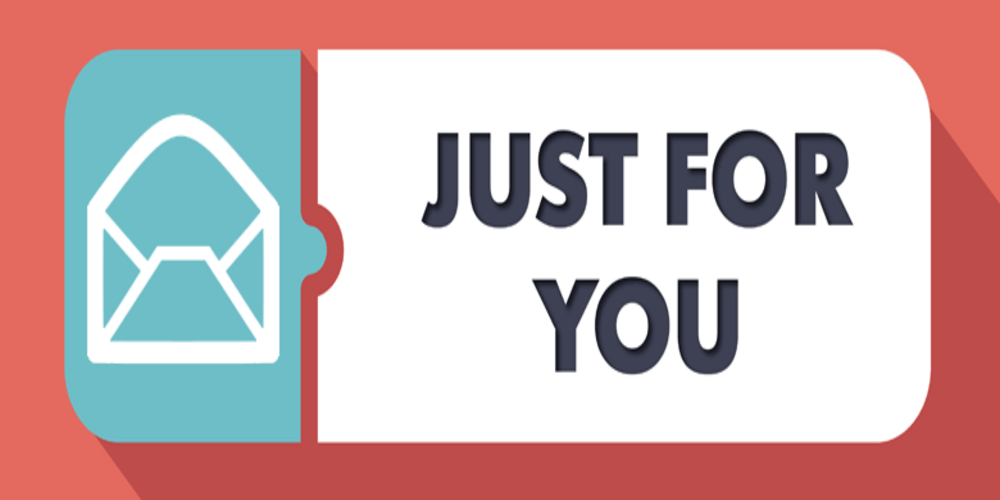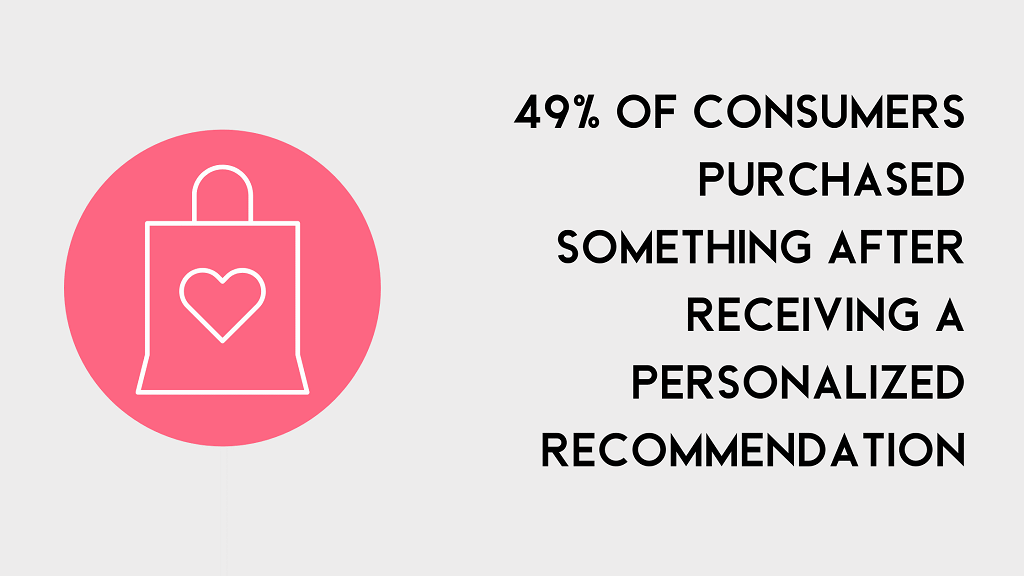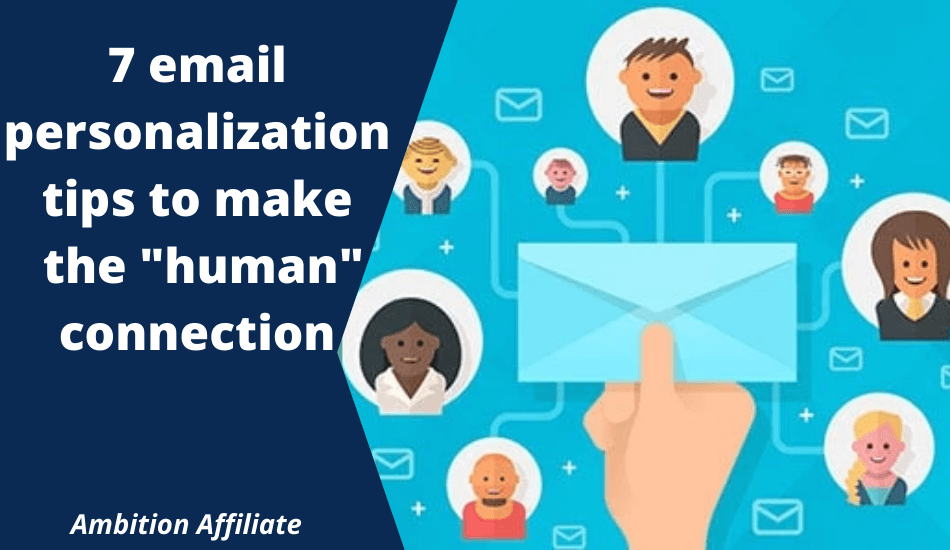Want to connect more with your customers?
Do you feel like your emails aren’t connecting with people in a meaningful way?
Email personalization is a great way to do this!
Email personalization has been one of the top marketing trends of 2021. However, many still believe that email marketing is ruined beyond repair.
But statistics show otherwise.
Email marketing is still very lucrative, and on average, email generates an ROI of $36 for every dollar spent – more than any other platform!
And this is why:
- More than $350 million was spent on email marketing in 2019 in the US alone.
- Four out of five marketers preferred to abandon social media in favor of email marketing.
- The global email market is expected to grow to US$17.9 billion by 2027, compared to US$7.5 billion in 2020.
But can’t you get better results from your email campaigns?
Well, chances are you’re not doing it right. The key to better email campaigns is personalizing emails to improve human connection.
Email personalization can be a great addition to your email campaigns. And when you’re ready to get started, this blog post will walk you through 7 tips on how to personalize your email and create that “human connection.”
Let’s start with the basics.
Table of Contents
What exactly is email personalization?
Email personalization is a marketing technique to use consumer information to create more targeted email campaigns and improve the reader’s experience to make them feel connected.
This could be information about their demographics, interests, past purchases, or anything else that makes them feel special.
Why do marketers love it so much?
Personalizing your emails can have amazing effects.
Personalizing emails can help you build a better relationship with your customers and show that you care about them as an individual and not just another account waiting for your company’s products or services.
According to a survey conducted by Think with Google, 90% of marketers believe that personalization significantly impacts company profitability.
Marketers who have personalized their emails have experienced the following benefits:
- 50% higher open rate of emails with personalized subject lines compared to an average email open rate of 20%
- A massive 760% increase in email revenue from segmented campaigns (6)
You might think that email personalization is only for big companies, right?
Not correct! Email personalization also works well for small businesses and can help them build a better relationship with their customers.
Why is email personalization so important to customers?
Every day, the average person receives many emails from different companies (just like yours), and your email ends up in the trash if it has no value. Email personalization can help you create emails that your customers will look forward to opening and reading.
Otherwise, when they read an email, the first thing that comes to mind is, “That’s just another selling point.” But when email personalization kicks in and speaks to their name or interests, it breaks that barrier and begins to build a connection between you and them.
And who doesn’t love to feel special?
Now let’s see how email personalization works in detail.
How to personalize the email and build that missing human connection?
 Email personalization is all about fine-tuning emails to meet the needs of each individual customer and make them feel special.
Email personalization is all about fine-tuning emails to meet the needs of each individual customer and make them feel special.
Here are some great ways you can personalize your emails:
Send e-mails with personal data
The simplest example of data-heavy emails is using your customer’s name in the subject line.
Subject lines are the first thing your customers see when they open their inbox, and how you describe them can affect whether or not they continue reading.
If you want email personalization to work for you, your subject line needs to be personalized to meet your customers’ needs.
However, email users receive more than 120 emails every day, all addressed by their name.
While the approach of sending personalized subject lines is effective, it’s dated (having been thoroughly beaten to death), and marketers have since raised the bar on email personalization by sending hyper-personalized relevant emails.
In addition to the primary use of the name, use data such as age, gender, birthday, likes, and dislikes to create a more targeted and personalized series of emails. Because let’s face it, even though your customer’s name is in gold in the subject line, if the content of the email itself isn’t relevant, there’s no way you’re selling anything.
The reader can open your email, but won’t bother going through the whole thing.
And there’s a good reason for that: data suggests that personalized promotional emails get 41% more clicks and are 29% more likely to be opened.
 A typical example of personalizing emails with data is birthday wishes to your customers or followers. You can also offer a discount or gift service in the email to make it the ultimate personalized experience.
A typical example of personalizing emails with data is birthday wishes to your customers or followers. You can also offer a discount or gift service in the email to make it the ultimate personalized experience.
But for all of this, you need to collect relevant data about your consumers.
To get data and resources for personalization:
- Details in your registration forms
You can ask for personal information such as gender, date of birth, etc. after a customer has provided their name in the registration form.
Don’t ask too many questions at once. Instead, build a relationship.
This small and almost invaluable piece of information can create personalized email campaigns.
Amusingly, I came across a study that suggests asking age on landing pages can lower conversion rates, so make sure you segment your landing pages for better conversions.
- Get help from analytics
Third-party apps and analytics services can help collect data, e.g. B. Search history, website browsing, number of times a client visited a particular page, etc.
This information can help attract window shoppers to potential long-term customers.
- Introduce polls
Before anything else, have your visitors complete a short survey so you can market the right product to them.
Encourage them to take surveys by offering leverage like discounts. Keep the polls short and sweet!
Submit it by a human name
 Another step to creating a connection is to send the email from a human name, that is, to personalize the sender’s name. Sending emails on someone’s behalf makes them feel more personal and like they’re receiving an email from a friend who cares about them. It allows you to make the initial connection and can lead to higher open rates and click-through rates.
Another step to creating a connection is to send the email from a human name, that is, to personalize the sender’s name. Sending emails on someone’s behalf makes them feel more personal and like they’re receiving an email from a friend who cares about them. It allows you to make the initial connection and can lead to higher open rates and click-through rates.
Make email design interactive
Where content is crucial, the design also plays a huge role. Some of the best practices for email personalization include using interactive images and videos.
Instead of a boring, straightforward old text email, make every ounce of your email marketing worthwhile by adding more color and imagery to it.
Adding images and videos can also help you get a message across in no time while increasing its reach exponentially.
However, you shouldn’t send uniform emails to everyone on your list and hope for the best. The lack of customization can result in valuable subscribers and lost revenue.
According to one of the key findings of the study, almost half of consumers (49%) bought something they didn’t originally plan to buy after receiving a personalized recommendation from a brand.

Personalization appears to be a driving force behind impulse purchases that greet customers and revenue for businesses.
Make a list segmentation of your friend
Segmentation divides your email list into separate segments based on criteria like age, engagement level, interest, gender, location, number of sales, etc. Segmentation makes content customization much easier and consumers don’t get material that isn’t relevant to them.
You can send tailored communications to specific groups of people that improve email engagement and increase ROI.
For example, customers who shop in a specific category can be grouped to send emails about the items they are most interested in, allowing for more sales.
Most major brands today follow the same email personalization strategy.
When you sign up for the Adidas newsletter, you will be asked for your gender. As a fashion brand, this simple question can lead to far better sales. With this small but valuable piece of information, Adidas sends out separate promotional emails to men and women. It increases the engagement rate, which in turn increases the ROI of the email.
Likewise, Netflix will email you a list of shows that may interest you according to your watchlist. It doesn’t randomly send you recommendations. Instead, these recommendations are based on your prior views.
That way, you only get recommendations for shows or movies that are relevant to your selection and interest.
Send personalized behavioral emails
Behavioral emails are one of the most result-worthy emails.
Automated triggered email replies are 75% more likely to be seen than general emails and have a 148% higher CTR compared to other regular emails.
So what is behavioral email?

These are automated emails sent in response to an action by a specific customer on your website. A typical example would be when you subscribe to a company’s newsletter and receive an immediate response email.
These emails often contain discount codes or links to discounted products, enticing customers to buy the product. Other examples are when a new customer buys a specific product, you can send them a personalized discount coupon for their next purchase.
Another example of this can be when a customer buys a product; an automated email will be sent to them asking for their opinion on the products and services.
Likewise, when a customer reaches a set number of sales, you can send them an automated email with a special discount coupon to appreciate and appreciate them as one of your loyal customers.
This technique is also used to re-engage and re-engage with previous clients, which brings me to my next point.
Connect to re-engagement emails
Re-engagement emails are emails sent to customers who have previously bought from you but haven’t done so in a while.
Services may have been forgotten. This strategy is useful for making sure you’re constantly in touch with your prospects.
For example, an online seller can send a re-engagement email to those who haven’t bought from them in over two months. The email may contain special offers or discounts and suggestions on what to buy the next time they visit their website.
Email “We missed you”:
It’s written to make the customer feel loved and valued, which encourages them to come back to feel valued.
The email could also include a personalized note from the store manager or small business owner, thanking them for their past loyalty and support and letting them know you value them as a customer.
These personalized emails are best for customers with:
- Abandoned Cart
For customers who have filled their shopping cart but have not yet checked out the items. You can email them and ask them to check out before stock runs out.
- Unopened emails
The best way to keep up with customers who haven’t responded to your emails in a while but were previously very engaged is with re-engagement emails.
Ask them if they want additional information and you’re done.
Use relevant landing pages in emails
Adding landing page links in an email sounds about right, but how do you add the personal element to create a connection?
Well, that’s easy.
Personalize emails with landing pages most relevant to your customers’ data. If you’re a fashion company and the person receiving your emails is male, make sure all links in the email refer to men’s clothing. If your recipient has purchased similar goods in the past, offer a link to a landing page with similar items.
Conclusion
The personalized email marketing campaign might sound like a daunting task, but with these tips, you’ll be ready to approach your email campaigns like a pro and create the missing link.
And who knows? You may see an increase in your conversion rates!
Personalization allows you to connect with your customers and make them feel valued. It is an incredible opportunity that should not be overlooked.
To Your Success!



